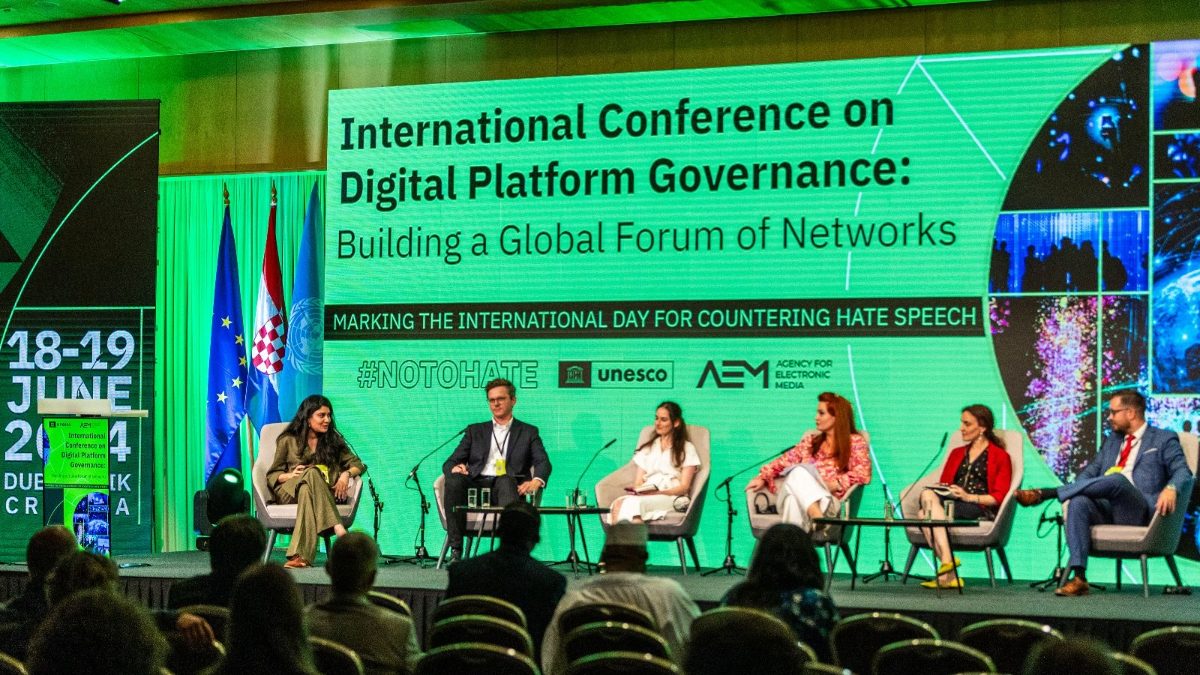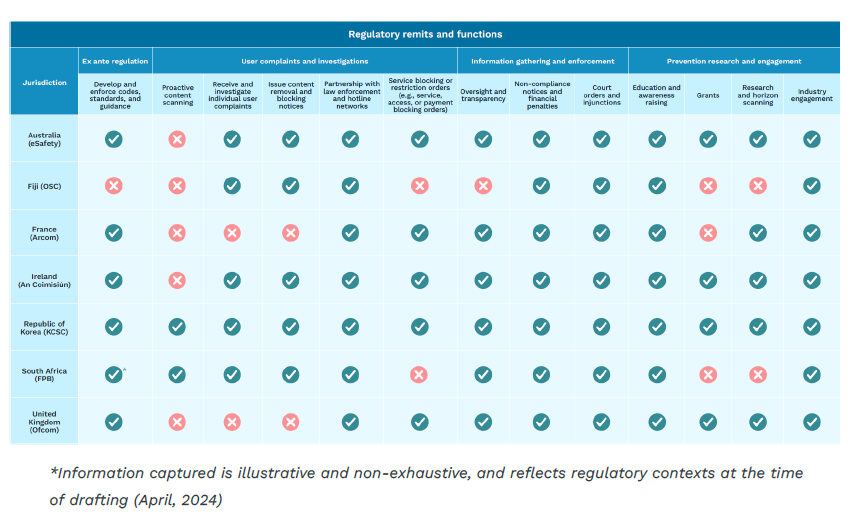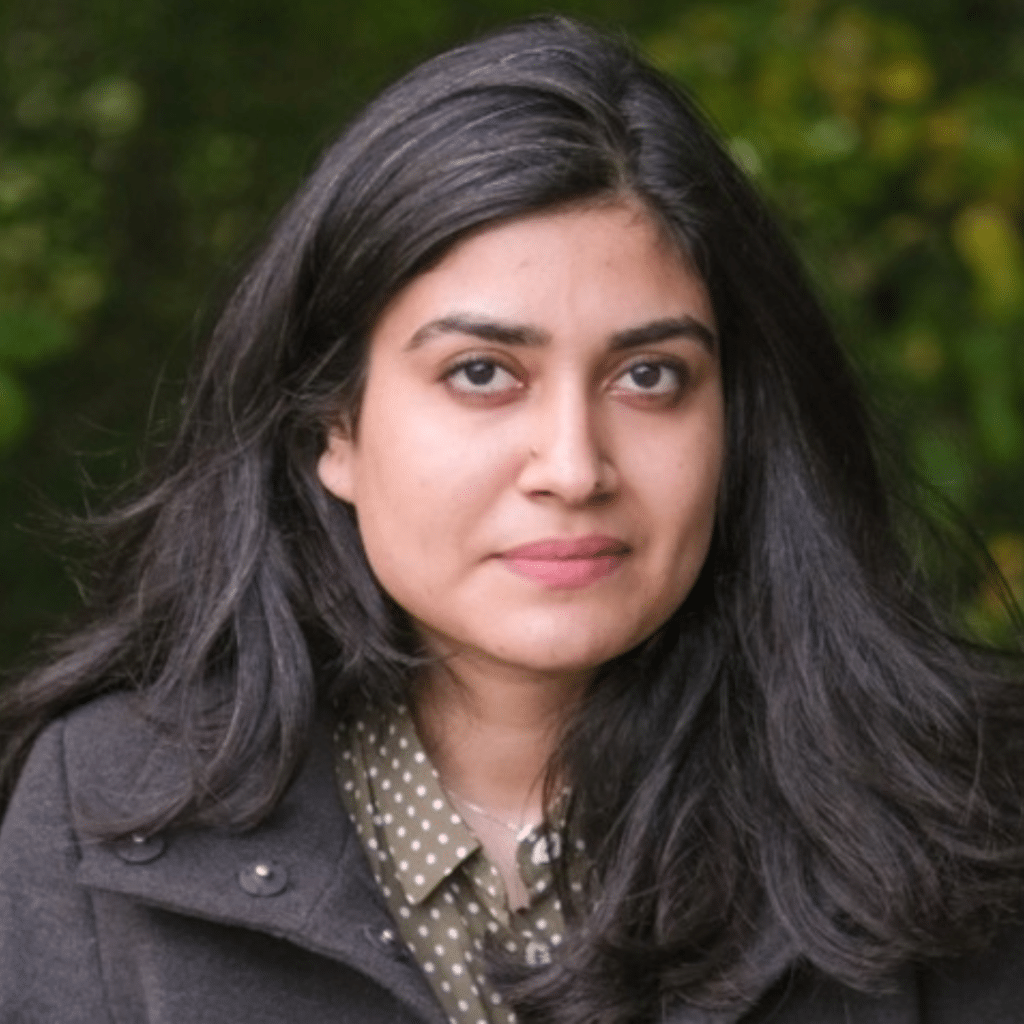From Local Laws to Global Standards? Tracking Efforts to Harmonize Social Media Rules
Ramsha Jahangir / Jun 27, 2024Ramsha Jahangir is a fellow at Tech Policy Press.

A panel discussion at the UNESCO International Conference on Digital Platform Governance: Building a Global Forum of Networks, 17-19 June 2024 in Dubrovnik. The author is pictured, left.
With a litany of platform regulations cropping up globally, regulators are ramping up efforts to align on how to hold platforms accountable. This round-up aims to help understand and track recent international efforts by regulators to harmonize regulations and potentially achieve coordinated enforcement of social media rules across borders.
1. EU teams up with national regulators on platform regulations
In June, the European Commission signed a series of administrative arrangements with national regulators to bolster enforcement of the bloc's landmark Digital Services Act (DSA). These administrative agreements, signed with the Australian eSafety Commissioner, ERGA (the European Regulators Group for Audiovisual Media Services), and Ofcom (the UK's media regulator), mark a significant step towards a more coordinated approach to tackling online harms. The pacts pave the way for intel-sharing and joint action on issues like the protection of minors online, age-appropriate design technologies, the transparency of online platforms, risk assessments and the impact of algorithms on systemic risks for society.
The EU Commission’s cooperation with ERGA, which gathers national media regulators under the Audiovisual Media Services Directive, will support the identification and assessment of systemic risks under DSA. ERGA will act as a facilitator to gather relevant information at the national level and produce reports on issues related to media pluralism, disinformation, and the protection of minors, among others.
The Commission’s arrangement with Australia’s eSafety Commissioner has a broad scope, including the protection of minors online, age-appropriate design methodologies, the transparency of online platforms and other measures of platforms to detect and report illegal content online, risk assessments and the impact of algorithms on systemic risks for society.
“Joint work with the eSafety Commissioner, including exchanging best practices on how such accountability obligations are implemented in practice, could help share global consistency and mutually reinforce our online platform regulations,” a Commission spokesperson told Tech Policy Press.
Australia is also currently reviewing its Online Safety Act, including considering the need for further projections against risks specific to generative AI (including deepfakes) and algorithms. DSA transparency reports have already served enforcement work by the eSafety Commissioner. “eSafety has already used some of the data from transparency reporting under the DSA to monitor compliance with our regulations, and likewise the Europeans are benefiting from the data and insights from eSafety’s BOSE transparency notices. We hope that these coordinated transparency waves will work in our common interest,” said an eSafety Commissioner spokesperson.
The EU’s collaboration with eSafety and Ofcom is expected to involve information sharing around the findings from transparency reports and risk assessments, where legally permissible, as well as deep dives, expert dialogues, joint research, and joint training of technical staff. “Confidential information will not be shared,” noted the Commission spokesperson.
2. UNESCO and media regulators launch the Global Forum of Regulators
Last week, the United Nations Educational, Scientific and Cultural Organization (UNESCO) brought together 87 national and regional networks of regulators in Dubrovnik, Croatia to coordinate an international approach to platform governance. The “Global Forum of Regulators,” which brings together international networks of audiovisual, electronic media, and online regulators, promises it will serve as a major platform for sharing experiences, capacity building, and good practices in the regulatory community at the national, regional, and global levels. Prominent regulator networks that are part of the forum include:
- The African Communication Regulation Authorities Network (ACRAN)
- The European Platform of Regulatory Authorities (EPRA)
- The European Regulators Group for Audiovisual Media Services (ERGA)
- The Global Online Safety Regulators Network (GOSRN)
- The Mediterranean Network of Regulatory Authorities (MNRA)
- The Platform of Ibero-American Audiovisual Regulators (PRAI)
- The Francophone Network of Media Regulators (REFRAM).
“Faced with global platforms, we need global responses. Thanks to the creation of this global network of regulators, hosted by UNESCO and already supported by participants from 124 countries, we will meet the major challenges posed by digital technology at the scale needed”, said Audrey Azoulay, UNESCO Director-General.
The Regulators Forum will regularly convene regulatory agencies (although the exact cadence is not clear) along with think tanks and researchers via the recently launched IT4 Knowledge Network, to discuss responses to countering disinformation and hate speech, protecting human rights, equipping the public with media literacy skills, and addressing technical challenges related to platform regulation.
The meeting of media regulators in Dubrovnik exposed both the need for international cooperation and the hurdles to achieving it. National and regional regulators – including representatives from media councils and electoral bodies – from varying backgrounds, mandates, and a range of expertise acknowledged that cross-border online challenges require a global response. They emphasized the importance of harmonizing regulatory practices, developing a common governance framework such as the UNESCO Guidelines for the Governance of Digital Platforms (which have drawn concerns from civil society organizations), and aligning them with international human rights principles. It’s an ambitious agenda when many media and audiovisual regulators are still transitioning to the complexities of digital regulation. Additionally, it was apparent that there is a significant disparity in resources, capacity, and skills between regulators from the Global North and Global Majority countries.
3. Regulatory coherence and coordination: the role of the Global Online Safety Regulators Network
In March, members of the Global Online Safety Regulators Network (GOSRN) told me they want to avoid the risk of a ‘global splinternet’ of inconsistent regulation by setting out a clearer and more consistent international framework for industry to follow.
In line with the Dubrovnik discussions, GOSRN members highlighted a shared concern among its group of regulators. They grapple with complex policy questions and the need to establish regulations for a constantly evolving sector, both technologically and commercially. To try to address this shared challenge, the network recently issued a position paper advocating for regulatory coherence.
The GOSRN position paper acknowledges the inherent novelty of both the regulatory tools (e.g., risk assessments, safety mitigations) employed by its members, and the business models and technologies they're applied to. The paper underscores the challenges individual countries face in regulating a powerful, global industry. It emphasizes international regulatory coordination as a means for GOSRN members to collectively influence the achievement of safety goals outlined in their online safety regulations.
“For instance, while jurisdictions’ risk assessment requirements might differ, there is scope to improve consistency in risk assessment methodology to help streamline compliance”, it says. The paper also proposes collaboration on user complaint systems and related mechanisms like data access for researchers and trusted flagger programs. Sharing best practices and experiences in this area would allow regulators to identify regional trends in online harms, compare compliance practices, and ultimately improve the effectiveness of online safety regulations across the globe.

Source: GOSRN position paper
GOSRN members are considering the potential for future coordination in handling complex online harms with an international nexus. When a user experiences harm that crosses borders (such as where the person experiencing harm is in one country, the person targeting them is in another, and the platform in question is domiciled in a third country), regulators could coordinate and share intelligence to ensure they could better assist the victim. Additionally, the paper suggests the possibility of joint investigations and enforcement actions against platforms that pose risks across borders or display patterns of non-compliance in multiple jurisdictions.
Looking ahead
The effort to harmonize platform rules through regulator-only meetings and alliances provides an opportunity to share research, experiences, and lessons learned, including information about online harms trends and experiences of engaging with regulated companies. However, translating these relationships into action, potentially to include joint enforcements, by regulators with a wide range of expertise and varying mandates across diverse political contexts will continue to be a challenge.
Authors
